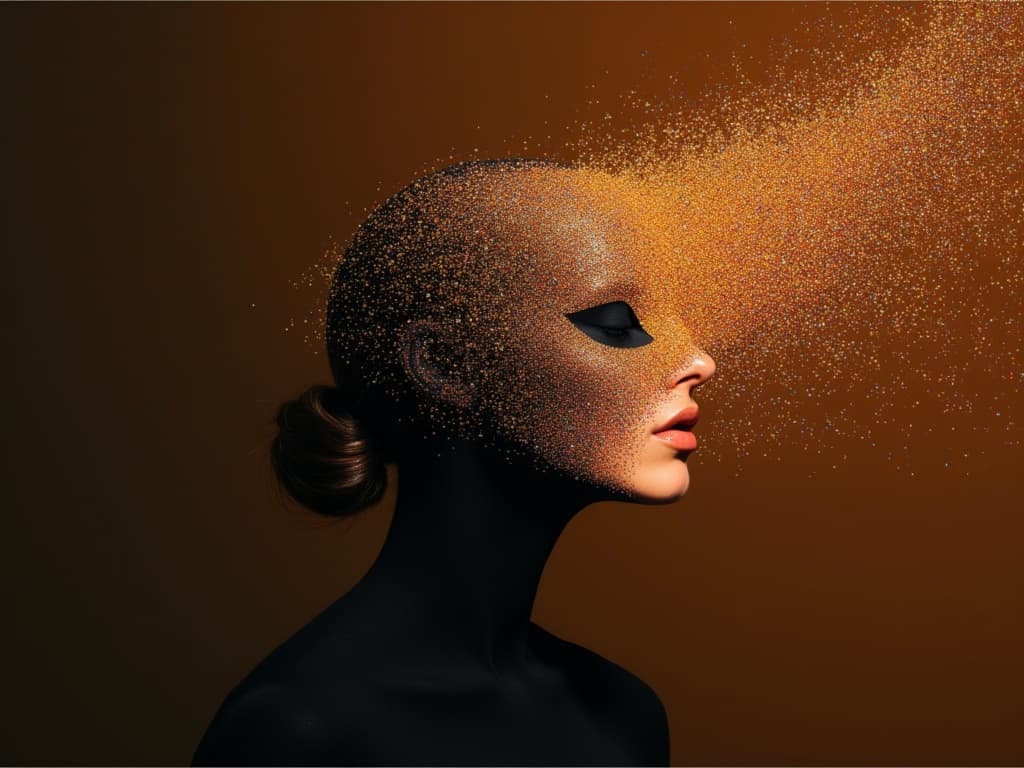Multimodal AI unifies image, audio, and video processing in single models, enabling cross-domain translation and dramatically compressing development timelines for complex applications.
Beyond Single-Domain AI
Multimodal generative AI has fundamentally altered how developers approach software creation. Unlike earlier systems restricted to single domains, these advanced models can simultaneously understand and generate content across multiple forms of media, creating genuine opportunities for innovation that weren't previously feasible.
The first generation of AI tools forced developers to work within rigid boundaries. Image models for visual generation and audio models for speech synthesis existed in isolation, requiring complex integration work to create cohesive experiences.
Today's multimodal AI models break down these silos, enabling developers to build applications that seamlessly navigate between different types of data. This represents more than technical convenience but enables entirely new categories of applications.
Contextual Understanding Across Domains
What makes multimodal generative AI genuinely transformative is its ability to establish meaningful connections between different types of content:
- A developer can feed an image and receive a detailed description
- Text prompts can generate contextually relevant images or videos
- Audio can be analyzed alongside visual data to create rich, multi-sensory responses
- Visual wireframes can be transformed into functional prototypes
This cross-domain understanding allows developers to create applications that mirror how humans naturally process information: holistically rather than in isolated channels.
falMODEL APIs
The fastest, cheapest and most reliable way to run genAI models. 1 API, 100s of models
How Multimodal Models Are Transforming Development Workflows
The integration of multimodal models into development pipelines is fundamentally changing how software gets built:
1. Accelerated Prototyping and Iteration
Developers can now rapidly move from concept to functional prototype without switching between specialized tools. Models like FLUX.1 Redux enable image-to-image transformations while maintaining semantic understanding, and Wan v2.2 generates high-quality video from text prompts with sophisticated motion control.
These multimodal technologies are dramatically compressing development timelines while expanding creative possibilities.
2. Dynamic Content Generation at Scale
With multimodal AI models, developers can build systems that dynamically generate tailored content based on complex contextual factors. For example, an e-commerce platform might generate product videos on demand from still images, or an educational app could transform explanations into visual diagrams based on user comprehension level.
This capability is particularly powerful with models like Luma Dream Machine for cinematic video generation and FLUX.1 Pro for high-quality image synthesis that understands complex contextual prompts.
3. Enhanced User Experiences Through Cross-Modal Translation
The ability to translate between modalities opens new frontiers in accessibility and user experience. Developers can now build applications that automatically:
- Transform visual content into detailed descriptions
- Generate video content from still images to increase engagement
- Create immersive audio experiences from visual inputs
These capabilities are production-ready using models like ElevenLabs Turbo v2.5 for natural voice synthesis and Minimax Video for transforming images into dynamic video content.
The Implementation Hurdle
While the potential of multimodal generative AI is substantial, harnessing it effectively requires solving significant technical challenges:
Processing Power and Latency
Multimodal systems demand substantial computational resources, especially when operating in real-time. These models often require specialized hardware and optimization techniques to achieve acceptable performance.
fal addresses this challenge by optimizing infrastructure for models like Kling Video v2.1, which generates cinema-quality video with complex motion dynamics while maintaining acceptable latency for production applications.
Deployment Complexity
Traditionally, deploying multimodal AI models to production environments has required extensive DevOps expertise. Each model might have different dependencies, resource requirements, and scaling characteristics.
The fal serverless platform simplifies this process dramatically, allowing developers to focus on building innovative applications rather than wrestling with infrastructure.
Industries Being Reimagined
The impact of multimodal generative AI extends beyond theoretical capabilities. It's already reshaping how developers approach problems across industries:
Media and Entertainment
Developers are building tools that can generate video content from simple text descriptions, transform still images into animated sequences, and create dynamic interactive experiences that respond to multiple input types. These capabilities are transforming software development processes across the creative industries.
Healthcare and Diagnostics
Medical applications now combine visual analysis (X-rays, MRIs) and even audio inputs (patient descriptions) to create more comprehensive diagnostic tools. Models like Stable Diffusion 3.5 enable detailed medical image analysis while maintaining interpretability.
E-commerce and Retail
Product visualization tools can generate images or videos from text descriptions, create interactive 3D models from 2D images, and enable virtual try-on experiences that combine visual and textual data to help customers make purchase decisions.
Building With Multimodal AI Today
For developers looking to incorporate multimodal generative AI into their projects, the path forward is clearer than ever:
-
Start with proven models: Begin with FLUX.1 models for image generation or Pika v2 for video creation to quickly integrate multimodal capabilities.
-
Explore cross-modal translation: Use Ideogram V3 for text-rich image generation or Tripo AI for 3D asset creation from text descriptions.
-
Combine modalities: Layer models like Face Swap with video generation to create consistent character experiences across different media types.
-
Scale confidently: Leverage fal's infrastructure to deploy these models without managing complex GPU clusters or optimization pipelines.
Technical Considerations for Production Deployment
Multimodal AI models differ fundamentally from traditional single-domain AI systems. Their ability to process and generate multiple types of data simultaneously enables applications that can seamlessly translate between different forms of media, mimicking how humans naturally process information from multiple sensory inputs.
Models like HunyuanVideo and CogVideoX demonstrate how advanced architectures manage the varying computational requirements of different media types through specialized pipelines, enabling developers to focus on application logic rather than infrastructure optimization.
fal's platform handles scaling automatically, maintaining performance as user demand fluctuates while optimizing for cost and responsiveness.
Recently Added
Emerging Applications and Use Cases
The most transformative applications of multimodal AI models are emerging in personalized content creation, immersive e-commerce experiences, and accessibility tools that translate between modalities. Early adopters are leveraging models like Recraft V3 for precise design generation, Runway Gen-3 for cinematic video creation, and Aura TTS for natural voice synthesis.
These applications span industries from entertainment to healthcare, demonstrating how multimodal capabilities can solve complex problems by combining different types of data processing in ways that single-domain models cannot achieve.
From Integration to Innovation
As multimodal AI models continue to evolve, we're moving from a phase of basic integration to genuine innovation. Developers who master these technologies today will be positioned to create the next generation of intelligent applications that understand and interact with the world in ways that mirror human perception simultaneously extending beyond human capabilities.


















![FLUX.2 [max] delivers state-of-the-art image generation and advanced image editing with exceptional realism, precision, and consistency.](/_next/image?url=https%3A%2F%2Fv3b.fal.media%2Ffiles%2Fb%2F0a868a0f%2FzL7LNUIqnPPhZNy_PtHJq_330f66115240460788092cb9523b6aba.jpg&w=3840&q=75)
![FLUX.2 [max] delivers state-of-the-art image generation and advanced image editing with exceptional realism, precision, and consistency.](/_next/image?url=https%3A%2F%2Fv3b.fal.media%2Ffiles%2Fb%2F0a8689a8%2Fbbcmo6U5xg_RxDXijtxNA_55df705e1b1b4535a90bccd70887680e.jpg&w=3840&q=75)



